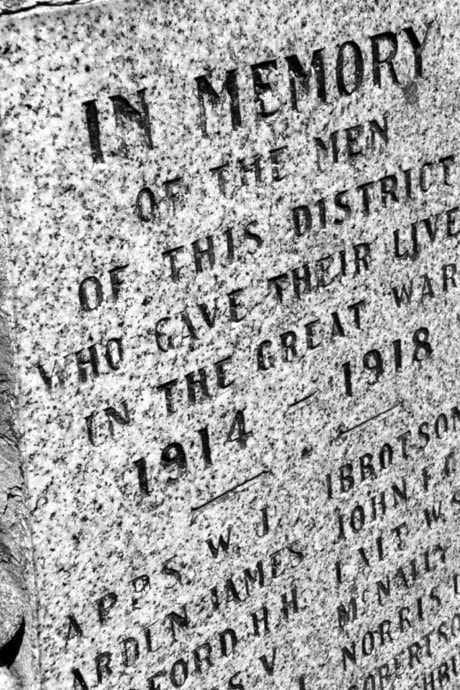A tiny tale of a handed-down medallion in England sparked memories of a romance left unfinished.
An email to the News Review from Judith Beeby of Northamptonshire, England ignited the flame.
She sought information about a medallion engraved on one side “won by S.F.C. Saanich Fair Oct. 5, 1912 W.J. Apps” with a three-dimensional “football” (soccer for us Canadians) on the other. The 2.5 by three inch silver medallion was handed down to Beeby by her grandmother.
The small story in the May 2 edition of the PNR caught the eye of Michael Rice of Fenian Antiques in Saanichton. He did a little digging, as did a couple of other readers. Thanks to a lifetime of skill and an abundance of resources – a 33 year Saanichton resident and a former Central Saanich heritage commission member who just likes Peninsula history – Rice came up with the most extensive timeline for William John Apps.
While there is no soccer – or football – played at the fairgrounds now, Rice figures it could have been, back when the area was larger. The fair traditionally offered out cards and ribbons for prizewinners, never medallions.
“They couldn’t afford to have medals given out … there were just too many,” Rice said.
The large silver pendant says S.F.C. on the back, which could be Sidney or Saanich Football Club, bearing in mind soccer was (and often still is by our European friends) referred to as football. That club likely purchased medallions for team members.
“It was a stock issue so the same medal would have been used by other sports clubs,” Rice said.
It could have been passed down from the Morris family or Miller family and found its way overseas.
“I have bought Canadian medals out of Britain and Ireland a number of times without people knowing how they got there,” Rice said.
While the little medal remains mired in mystery, Apps provided enough intrigue to keep Rice digging into the former Sidney man’s life. He discovered Apps lived in B.C. in 1912, but there is no easy way to determine when he arrived in Canada.
“There are passenger lists for all voyages to Canada back to his year of birth, but these are indexed by shipping line and voyage. There is no means of searching by passenger name,” Rice said. “Given that there were numerous steamship lines engaged in the business of transporting immigrants and many voyages each year, it would be a lengthy process to work through them.”
Apps was listed in the 1914 Henderson’s Directory living in All Bay, Sidney and working as a painter, but is not recorded in earlier directories.
Rice found enlistment papers that describe Apps – born in Portsmouth England on July 9, 1887 – as five foot four and three-quarter inches tall with light brown hair, blue eyes, and his religious affiliation as the Church of England. He enlisted with the Canadian Expeditionary Force in Ottawa on Jan. 20, 1915. He died during the war and is among the 619 Commonwealth troops interred at Ridge Wood Military Cemetery in Belgium.
The name W.J. Apps, like on the medallion, is engraved in the centoaph on Sidney Avenue.
What Rice – and independent of his search, fellow PNR reader Anne Clarke – unearthed that may tell a tale of romance, was his listing as next of kin: Miss J.M. Morris at 855 Queens Ave, Victoria.
Diana McKay, visiting the Peninsula from Terrace to settle her mother in a care home, picked up the News Review for a quick read, and was jarred by the plea for information surrounding the medal inscribed to W.J. Apps.
Her grandmother, Jessie Mabel Morris Miller Gibson at the time of her death in the 1973, never stopped talking about “Will Apps.” This despite the fact that in 1918 Jessie married Victoria lawyer Thomas Munro Miller, McKay’s grandfather.
“He wasn’t the love of her life,” McKay said. “She never stopped talking about Will Apps … he was ‘fair haired and handsome’.”
It would all make perfect sense, if only Jessie M. Morris was Beeby’s great aunt.
“My grandmother’s sister married in Canada in 1908 and lived in B.C.,” Beeby said.
But that aunt’s name was Edith Hawkes.
And the mystery continues.
Unfinished romance
The unfinished romance isn’t an uncommon wartime tale.
“I see the parallel in our family situation,” Rice said. He was named Michael for an uncle, a seaman killed while serving with the British Navy. At the time he had a young girl who was devoted to him.
“All her life,” Rice said. “We’re still in touch with her.”
She continues to visit the memorial bearing his name.
“I feel for her late husband because he always had to compete with Uncle Mick … my Irish hero,” Rice said.
More medals, more mysteries
Michael Rice, who’s been buying and selling bits of history since he was a kid – back then it was rare coins purchased from other kids – is curious about where William John Apps’ other medals could have travelled.
At the end of the war, Jessie as his next of kin, would likely have been sent the military medals to which Apps was entitled – the War Medal, the 1914-15 Star, the Victory Medal and the Canadian Memorial Cross.
Related story:
